Those who wake up at night, jumping up from a sharp pain in the lower leg, calf or foot, have a hard time. Kneading a little sore spot, they feel relief, but not for long. After taking a relaxed position, discomfort are overtaken again. You have to constantly move your limbs so as not to feel the impulses. This disease is medically called “Ekbom syndrome.” Find out how to deal with it below.
What are the symptoms of restless legs?
Ekbom's syndrome (painful restless legs) is a disease that is characterized by painful sensations in the lower extremities. Unpleasant impulses intensify in the evening and at night, they appear in a calm state and decrease when moving. As a result of the disease, the patient has to move, bend, straighten, and massage the source of pain. With this rhythm, the pain subsides, but as soon as you stop, the symptoms intensify.
The sensation is described as a tingling, trembling and buzzing sensation in the limbs. You feel a burning sensation, a burning sensation, and numbness. Disturbing movement under the skin (goosebumps), cramps. Aches appear in the legs (hips, feet, tops), sometimes in the arms. The majority of patients characterize these symptoms as painful. Since the pulling sensations occur at night, it is difficult for a doctor to make a diagnosis. It is based on human complaints plus the results of a blood test. They will help prevent diseases associated with vitamin deficiency.
Painful restless legs syndrome occurs rhythmically. Peak pain occurs at night (from midnight to 4-5 am). Afterwards, the restless manifestations weaken, but make themselves felt. Severe stages diseases are characterized by a lack of cyclicity. It makes a visit public places impossible. It's hard for a person to be long time in one position, and the desire to move will not keep even the most patient in place.
Due to restless feelings, a person experiences insomnia. People suffering from this disease have trouble falling asleep for a long time or often wake up at night. This affects the individual’s mood, his desire to live and achieve his intended heights. During this rhythm of life, the patient experiences:
- chronic lack of sleep;
- apathy;
- absent-mindedness;
- increased fatigue.
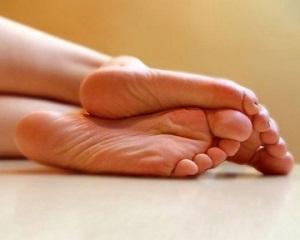
Aching feet
With such disturbing complaints, patients turn to the doctor. People hope to receive complete treatment for the disease, after which they can get rid of anxious feelings forever. Aching pain causes discomfort in the evening, intensifying towards midnight. To help relieve whining:
- compresses;
- warm baths;
- small massage;
- measures to ensure blood flow to painful areas.
Aching legs
Such sensations are described by a person who is seeing a specialist and wants to get rid of the disease. The causes of painful legs syndrome can be a deficiency of vitamins and microelements in the body. Over time, their acute deficiency contributes to destruction bone structure. This can be very severe pain, which include aches.
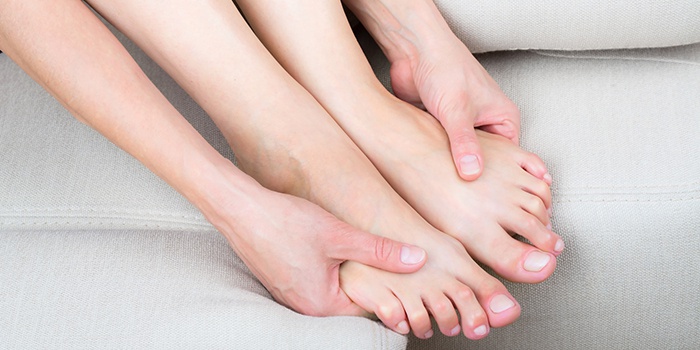
Pulling legs
This sensation occurs in a person who has a disease associated with vascular tone. Indeed, when blood circulation is impaired and elasticity is lost, blood stagnation occurs. In muscle tissue there is an accumulation of breakdown and oxidation products. My legs are numb, that’s where it comes from lower limbs. On initial stages this is imperceptible, but when visiting the clinic, doctors note thinning skin and protruding vascular pattern.
Feet are burning
This symptom serves as a harbinger of many diseases. The burning sensation can be caused by the activity of fungal microorganisms, the manifestation allergic reaction onto the fabric. The disease can occur with varicose veins, diabetes and other diseases. Only a competent doctor who will select an individual method of treatment can help you get rid of painful sensations.

My calves hurt
This type of sensation can be associated with many changes in the body. Calf muscle is a device responsible for limb movement. If spasmodic pain occurs with reverse side shins, be sure to consult a doctor. The causes of the symptoms of the disease can be very diverse: from circulatory disorders to injury to the muscle itself.
Leg cramps
Muscle spasm, or involuntary contraction, causes aching pain. This sensation is reminiscent of fossilized limbs, which are difficult for a person to manipulate. At this moment it happens oxygen starvation organs, because blood does not flow to them. How to deal with this feeling? - the doctor will answer. Causes of seizures as a symptom of the disease include:
- thrombosis;
- lack of potassium in the body;
- increased fatigue and others.

What causes leg diseases?
The syndrome is classified as neurological. It can be primary or secondary in nature. The primary disease is inherited at the genetic level. Secondary (acquired) is a syndrome that represents a set of sensations that depends on the patient’s condition. These include:
- pregnancy;
- obesity;
- deficiency of macro- and microelements;
- injuries spinal cord.
A variety of the disease also develops against the background of previous diseases. Other reasons causing discomfort in the legs and disturbing dream an adult may have:
- anemia, or iron deficiency in the body;
- disease – neuropathy, which develops against the background of obesity;
- pregnancy (affects increased load on your feet);
- consumption of large amounts of caffeine and narcotic substances;
- varicose veins;
- lack of B vitamins, magnesium;
- stress.

Treatment for restless legs
In order for the attending physician to be able to make a diagnosis such as a leg disease, you need to clearly draw up an anamnesis, describe the symptoms, and take tests. It is impossible to rely only on vague sensations - it is difficult to determine the cause and prescribe a course of procedures from them. Treatment is selected individually, taking into account the patient’s lifestyle and the nature of the disease. It must carry out the following tasks:
- Replenishment of micronutrient deficiencies (iron, potassium, magnesium, folic acid).
- Correcting the patient's restless regime - balanced nutrition, moderate physical activity, a walk before bedtime. You need to give up destructive habits such as coffee, strong tea and tobacco addiction. Before going to bed, you should prepare a warm foot bath and massage your limbs. This procedure will ensure blood flow to the extremities, relieving spasms and swelling.
- Use of medications prescribed by a doctor. It can be sedatives, which include substances plant origin. They can have a calming effect on the human body. Valerian and motherwort extracts are recommended. For severe convulsions, the doctor prescribes vasoconstrictor drugs to prevent the development of the disease.
Video: Restless legs syndrome
Sleep is an irreplaceable part of human life; it is the time given to the body to gain strength for a new day. Unpleasant sensation, “restless legs” cause problems important function body - restoration. How are two concepts related: rest and illness, why do they arise? painful sensations? The video will answer questions about Ekbom syndrome.
Restless legs syndrome is a rather unpleasant phenomenon that brings a lot of problems. That is why we must do everything possible to reduce the number of attacks or get rid of this disease altogether.
Tell
Willis' disease or Ekbom's disease "popularly" has a rather eloquent name - restless legs syndrome (RLS). This is a condition where at night unpleasant sensations appear in the upper and lower extremities - they make you move and, of course, deprive you of sleep. It is worth noting that the movement you make, paradoxically, causes relief. This picture is characteristic of a neurological disease. Willis disease affects adults, most often those who are at least 60 years old. But, like many other diseases, RLS Lately noticeably younger. It would seem, what a pleasure after a long time working day come home and have a good rest. Agree that sometimes this is exactly what is needed for happiness. Imagine the surprise of those who discover: after spending the whole day running around... their legs are not ready to rest! Despite fatigue and aching pain in the muscles, as if it had already crawled under the skin: no matter how you lay your limbs, they all itch. Common situation? A typical picture for restless legs syndrome.
Restless legs syndrome comes in primary and secondary forms.
In the event that RLS occurs on its own - just like that, for no reason, out of nowhere, then doctors call it idiopathic or primary restless legs syndrome. According to experts, this disease hereditary and occurs mainly among relatives. This type of RLS is a rare occurrence. Most often it occurs secondary form Willis disease - RLS is a consequence of some illness or new condition of the body. The problem is that this phenomenon is based on disorders of the central nervous system, which manifest themselves in the form of improper metabolism of iron and dopamine.
Often such “misunderstandings” in the body occur for the following reasons:
- trauma (especially if the spinal cord is affected);
- pregnancy;
- kidney disease (especially with renal failure);
- diabetes;
- anemia;
- alcohol poisoning (pronounced intoxication);
- drug overdose;
- side effect after certain medications.
Restless legs syndrome: drugs that cause the disease
Some medical supplies provoke restless legs syndrome, but doctors do not warn patients about this. We suggest that you familiarize yourself with the list of such “dangerous” medications. If you have a hereditary predisposition to Willis disease, you definitely need to know this!
- all caffeine-containing medications;
- antiemetic medications that contain metoclopramide and prochlorperazine;
- allergy medications (almost all);
- neuroleptics;
- fever medications that contain dipheninehydramine;
- antidepressants (tricyclics and SSRIs);
- all medicines containing lithium;
- drugs that lower blood pressure;
- phenothiazines;
- neuroleptics (based on risperidone or olanzapine);
- medications for seizures (especially phenytoin, zonisamide, and methsuximide).
We should also not forget that alcohol is also very harmful, as it provokes restless legs syndrome: it first relaxes the muscles, and then leads to their contraction.
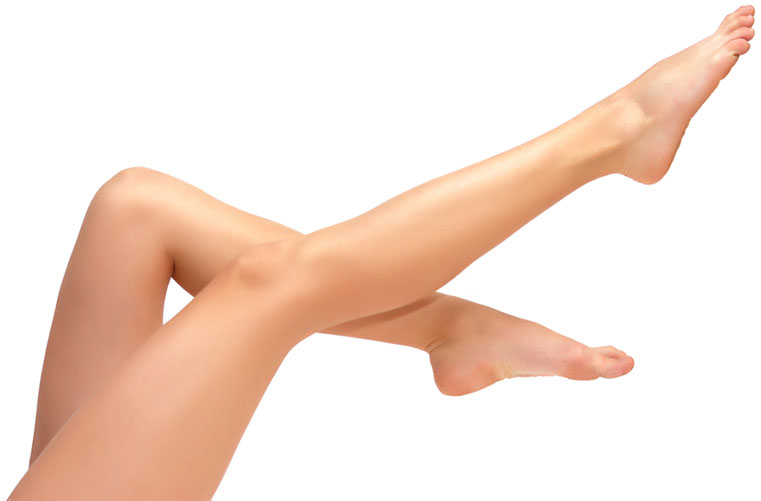
Restless legs syndrome: symptoms
- Unpleasant and “strange” sensations in the legs. Patients describe their condition in different ways: trembling, “pins and needles”, burning, “moving”, “crawling”, twitching. Moreover, approximately 30% of patients claim that during an “attack” they experience pain. Most often, people simply cannot accurately describe their condition - it is quite difficult to characterize it, which is why patients say: “it’s so unpleasant in the legs.” What is noteworthy is that the area of localization of the “strange” sensations is varied - just a tingling sensation in the thigh, immediately “goosebumps ran” in the foot, and then the movement became more active in the lower leg. At the same time, they roll like waves with a frequency of 5 to 30 seconds. As for the time of day, the attacks mostly occur at night, but sometimes they may not stop even during the day. Restless legs syndrome often occurs during pregnancy, but the phenomenon goes away after childbirth.
- Legs at rest - symptoms are stronger. A characteristic feature of RLS is the fact that at rest, “pins and needles”, trembling and “crawling” become more noticeable. Especially all these sensory and motor symptoms are activated during the period of falling asleep. For an attack to begin, it is necessary different quantities rest time - one patient only needs to sit down for 5 minutes, while the second needs to “wait” for an hour or more.
- Legs in motion - symptoms disappear. The more you move, the more likely it is that the RLS will weaken or even subside. Regular walking helps best, but a little walking can also be a salvation. exercise stress: bending, jumping, training on exercise machines. It all depends on the patient and is purely individual. Unfortunately, movements often provide a slight respite, and then the symptoms disappear. new strength roll over a person. If the case is very severe, then pain can be eliminated only for a short period of time.
- Circadian pattern of symptoms. Early in the morning and in the first half of the day, RLS almost never bothers the patient. The situation escalates from approximately 17:00 to 05:00. Most often, with dawn, even the most severe pains subside, giving the patient a little respite.
- Limb movements during sleep. Often during sleep, short movements of the legs occur at intervals of 40 or even 5 seconds. Approximately 70 to 90% of people diagnosed with Willis disease suffer from these symptoms. What is noteworthy is that for those with a mild form of the disease, involuntary movements occur approximately from 60 to 120 minutes after the person falls asleep. But if the disease is severe, then leg movements can last all night.
- Insomnia. Very often, RLS is accompanied by insomnia, since with such a problem it can sometimes be difficult to fall asleep, and if you manage to “snatch” a couple of hours of sleep, then frequent awakenings guaranteed. Often insomnia develops into chronic stage, so patients want to sleep all the time.

Restless legs syndrome: treatment
Treatment of this disease depends on whether the disease is primary or secondary. Restless legs syndrome is difficult to treat; everything is aimed at weakening the attacks and eliminating them completely. That's why, successful outcome depends on the degree and severity of the disease.
First of all, do not forget that RLS is a deficiency state of the body, so it is necessary to compensate for the lack of iron. (Especially since RLS often occurs against the background of anemia).
Ferrous sulfate is prescribed as treatment. It is worth noting that it must be taken for several months to see the first results and positive dynamics. At the same time, do not forget about folic acid, which can also provoke RLS.
Treatment with medications is more effective, but certain conditions must be followed:
- Doses of drugs should be minimal.
- Dosages are increased gradually until the effect is visible.
- The drug is selected for each person individually, after personal testing.
- Treatment should be combined; this is the only way to get a good result.

Restless legs syndrome: comprehensive therapy
To alleviate the patient's condition, it is necessary to use the following treatment:
- Sleeping pills (with the addition of tranquilizers). If the case of the disease is mild, then a visible effect can be fully achieved if the doctor prescribes Clonazepam, Temazepam, Triosalam, Zolpidem, but only in small quantities (the most lowest rate). These drugs have only one huge disadvantage - addiction.
- Dopamine. Medicines that give dopaminergic effects allow you to get almost instant results. The most effective drug is Sinemet, its effect is almost instantaneous, even when using a minimal dose. Relief occurs after half an hour and lasts more than three hours. If the symptoms of the disease do not appear regularly, then it must be taken from time to time - when necessary. If the pill has been taken, and the symptoms return at night, another dose is allowed - right in the middle of the night. You can also take Sinemet as a preventative measure, for example, if you need to be without active movement for a long time: driving a car or flying on an airplane. Unfortunately, this drug has side effects - the “reinforcement effect” - over time, the symptoms will become more and more severe, and the body, having gotten used to the medicine, will stop responding to it. In this case, as a complication, the symptoms will intensify during the day or morning. To avoid this, you need to take Sinemet in small doses, as recommended by your doctor, and not increase the amount of the drug individually. Sometimes this medicine may cause complications such as upset stomach, nausea and vomiting, and severe headache. If suddenly addiction to Sinamet occurs, it is necessary to switch to another dopaminergic drug. Permax (Pergolide) has proven itself well. Some experts note that it is even more effective than Sinamet, and besides, this medicine does not have such side effects, like the first drug. Of course, Permax is not harmless; it can cause constipation, runny nose, hypotension, and in very rare cases, hallucinations. But there is no “addictive effect”. Parlodel (Bromocriptine) has worked well for RLS. Eat positive points when restless leg syndrome is treated with Mirapex, but the effectiveness of the drug has not yet been fully studied.
- Anticonvulsants. Another aspect complex treatment, which you can’t do without. In the treatment of RLS, Gabpentin and Carbamazepine (containing Nerontin and Tagretol) have shown their effectiveness. It is strictly necessary to follow the dosage prescribed by the doctor.
- Opiates. If Willis disease is severe, then there is every reason to prescribe opiates. Basically, these are Codeine, Propoxyphene, Oxycodone, Pentazocine or Methadone - in different dosages. Side effects of these drugs: nausea, dizziness, confusion. It is strictly necessary to adhere to the dose prescribed by the doctor, then there is a chance to survive for many years with a small amount of opiates without acute dependence on them. If you do not follow the dosage, you can make it even worse for yourself, since opium addiction will also be added to the RLS.
- Other medications. It also happens that doctors prescribe medications containing beta-blockers - these are non-narcotic analgesics, which are similar in composition to antidepressants. But often drugs that belong to this category of drugs intensify the symptoms of the disease, so they are not suitable for treatment for all patients. These medications are prescribed only when other medications do not help at all.
It is very important to understand that if you have restless legs syndrome, then you are sick, and the disease must be treated. You shouldn’t leave everything to chance and hope for “maybe.” Only timely assistance from highly qualified specialists can, if not cure, then significantly reduce your attacks.

Restless legs syndrome: treatment at home
Non-drug treatment can also bring noticeable relief. It is necessary to strictly follow the rules recommended by doctors:
- Physical activity on the legs, especially before bed. But this does not mean that you need to sit in the gym for days or do weightlifting, since the load should be moderate. Yoga or Pilates are great, as are regular stretching exercises. It is worth noting that even the patients themselves claimed that the physical activity given to the legs at the onset of the disease relieved the symptoms, and the disease simply receded. But if you let everything take its course, restless legs syndrome will soon develop, and stress will not bring relief, but new pain and symptoms.
- Voluntary massage and rubbing of the legs.
- Contrast foot baths: alternating cold and hot water.
- Mental training: Concentration will not only train the brain, but will also help cope with neuropsychiatric stress. Start drawing, weaving beads, debating, or playing strategy videos.
- Physiotherapeutic procedures do not benefit everyone, but sometimes magnetic therapy, mud, paraffin and lymphatic press work wonders. All this is purely individual.
- Avoid coffee, tea and chocolate, as well as any caffeine-containing products.
- Maintaining a daily routine: you need to go to bed at the same time. It is better to fall asleep and wake up late, then during the day you will not want to sleep. Make your sleeping conditions as comfortable as possible.
- Do not use medications that cause RLS.

Restless legs syndrome: treatment with folk remedies
Traditional medicine also offers its own ways to alleviate the condition of RLS. These tips are easy to follow and can be used in parallel with drug treatment.
- When you feel an attack “approaching”, you need to twitch your legs a little - this is the first means to prevent “dancing”. You can just walk around the room or take a 30-minute walk outside. The most important thing is that you should not lie down at the first sign of an attack - move.
- During the day (advice to everyone, by the way), change your body position more often - do not sit on a chair for the entire 8 hours (even if you have a sedentary job). If you really can’t get up often, put pillows and bolsters under your feet, place a small stool and move your legs back and forth.
- As soon as you feel an attack starting, pour cold water over your feet.
- Buy a vibrating massager and massage your legs with it before going to bed - this will relax your muscles and stop an attack of RLS.
- Sleep in cotton socks and silk pajamas.
- Don't eat a big meal at night. It is better to have dinner with a glass of kefir or salad.
- Eat as many foods as possible that contain iron, such as apples. Don't give up other fruits either.
- Avoid alcohol - it will stimulate the nervous system and, as a result, provoke attacks.
- Stop smoking, as nicotine is the main trigger of symptoms. Patients are often surprised that as soon as they quit smoking, Willis disease also left them.
- Try to rest as much as possible and not become overtired.
- Drink decoctions instead of tea soothing herbs: valerian, St. John's wort, motherwort, mint.

Restless legs syndrome: alternative treatment
- Learn to breathe properly and relax - this will allow you to relax and, as a result, prevent an attack of RLS. The process looks like this: take a deep breath, throw all your problems and worries away, calm down, feel like your legs are filled with lead and you can’t move them.
- Rub your feet or entire legs up to your ankles with freshly squeezed lemon juice. You can make foot baths with lemon.
- Talk to your doctor about taking a multivitamin complex - this is not only very good for your health, but also a real chance to prevent the occurrence of RLS attacks.
- Take ¼ aspirin per day - this good remedy to thin the blood, which will help, if not completely eliminate, then at least reduce attacks of RLS.
- Make yourself a rule - every day you should eat two apples.
- At night, rub your feet with peppermint oil. Rub the skin until it turns red and a slight tingling sensation appears.
- Get yourself a hobby - in autumn, doing what you love often helps you cope with various ailments(and even without taking medications).
- Remember - your feet should always be warm. If your feet often get cold, this can provoke an attack, and even complications will begin.
Remember! You should not self-medicate, especially if you are not sure of your diagnosis! Consult a doctor who can confirm or refute your suspicions of restless legs syndrome, and also recommend how to cope with the pain. Don't forget that without specific treatment, restless leg syndrome often “hides” under other serious illnesses, such as Parkinson's disease, diabetes or kidney disease.

Restless legs syndrome. Video
Willis disease is a common disease nowadays neurological disease, popularly called restless legs syndrome. Expressed as discomfort in the legs. Because of this condition, you want to constantly move your legs, itching, burning, and “goosebumps” appear on the skin. The pathology is unpleasant - after a hard day at work it is impossible to sleep or lie down in a calm state.
The syndrome occurs most often in people over 40 years of age, but young people are also affected. The disease occurs more often in women than in men. This is explained by the fact that men have a stronger nervous system. The causes of the disease vary.
Causes
The exact causes of the disease have not been described. Taking into account multiple observations, it will be possible to identify with great confidence the causes of restless legs. Due to improper exchange of dopamine and iron, disturbances appear in the central nervous system. Causes of the syndrome:
The probability of inheritance of the syndrome is known. If a chance is identified, it is necessary to use selected medications with caution that can provoke restless legs disease. Sample list:
- Medicines containing caffeine;
- Medicines aimed at combating allergies;
- Antipsychotics (risperidone, olanzapine);
- Antipyretic drugs containing definhydramine;
- Tricyclic antidepressants and SSRIs;
- Preparations containing lithium;
- Medicines to lower blood pressure;
- Anticonvulsants (especially phenytoin, zonisamide).
Symptoms of RLS
The manifestation of restless legs disease occurs mainly in the evening and early at night. A person experiences discomfort and inability to sleep normally. Gradually the condition progresses into chronic insomnia. A symptom appears fatigue, the person becomes lethargic and irritable. After arise nervous breakdowns, in some cases leads to disability.
Distinctive symptoms of the syndrome:
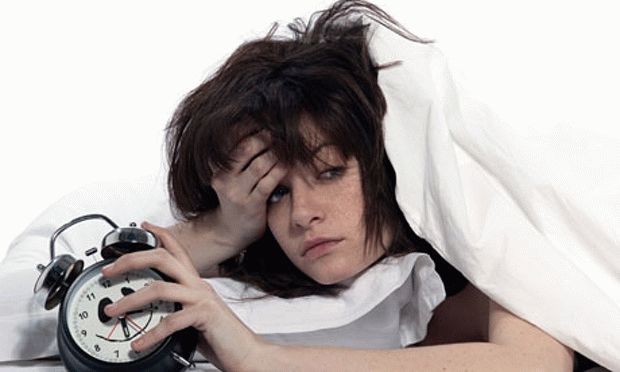
Therapy for restless legs
The neurological disease is extremely difficult to treat. Treatment is selected based on the form of the syndrome - primary or secondary. The primary treatment for the disease is control of attacks and elimination. First of all, the use of ferrous sulfate is prescribed during therapy. For results to appear, the drug must be used for several months, then it is possible to see the positive dynamics of the disease.
If the course of restless legs disease is accompanied by depression, the patient is prescribed antidepressants. Treatment with antidepressants has a sedative and calming effect. Treatment with medications (for example, novo-passit), and taking soothing teas (with valerian, motherwort, and other herbs) are indicated. Treatment can be carried out using similar methods: electrical stimulation and acupuncture.
In order for treatment of the syndrome with medications to give good results, a number of rules are prescribed:
- Dosage medicines turns out to be small;
- The dosage is constantly increased to provide results;
- Drugs are selected individually for each patient;
- A positive result is achievable only with combined treatment.
Complex treatment

There are a number of drug-free treatments for restless legs. It is acceptable to use at home. Some of the recipes:
- Follow a daily routine (sleep and wakefulness occur at a certain time);
- If you have a sedentary lifestyle, it is useful to do gymnastic exercises;
- Before going to bed, massage your feet with your hands or existing massagers;
- Before going to bed (2-3 hours before) do not drink tonic drinks;
- In the morning, to improve your condition, take honey and vinegar (a teaspoon of each ingredient in half a glass of water);
- It is permissible to resort to treatment with traditional methods.

Treating RLS at home
Tips to use at home to help treat restless legs:
- The use of warm and cold foot baths;
- Add mental training to physical training;
- At individual treatment Physiotherapeutic procedures will help;
- Eliminate caffeine-containing foods and drinks from your diet. Do not drink tea, coffee, chocolate;
- Do not take drugs that provoke the disease.
Folk remedies for the fight against RLS
There are a lot of tips to help relieve restless legs. traditional medicine, which can be used together with complex treatment:
- As soon as you feel a state of anxiety approaching, it is recommended to twitch your legs or walk for half an hour around the house or on the street. It is indicated to start moving at the first signs of the syndrome;
- You can’t stay in one position for a long time; you need to change your body position often;
- To relax your legs, massage is done before bed;
- You can't overeat at night;
- Required to consume a large number of foods filled with iron, restoring deficiency in cases of restless legs;
- Quit alcohol and smoking;
- Do not overwork, it is recommended to rest more;
- Instead of regular tea, drink with soothing herbs.
Traditional recipes for restless legs:
- Baths with the addition of lemon help with attacks; squeezed lemon juice can be rubbed on your feet. The folk method helps well in the fight against restless legs syndrome.
- To reduce attacks, it is indicated to thin the blood, use 1/4 aspirin per day.
- It is recommended to rub the skin with mint oil until it turns red.
- An example of a folk method is horseradish treatment. A horseradish tincture is made, the roots and leaves are crushed and infused with alcohol. Afterwards it is rubbed into the legs, from the feet to the knees.
- Wearing socks made of cotton or natural wool helps.
- Nettle baths with the addition of currant leaves, oregano, sage and valerian root have a good effect on restless legs. It is useful to take a bath before bed. Do the procedure for 10-15 minutes.
- When massaging the feet, ointments are used to relax and soothe the skin.
Prevention of RLS
When preventing the disease, it is necessary to follow the rules of sleep, go to bed at the same time every day. A balanced diet is recommended. Exercise. To avoid the symptom of restless legs, avoid bad habits, love an active lifestyle.
You can do yoga, aromatherapy, meditation, listen to calm music. The main rule is that if the first signs of restless legs appear, you need to consult a doctor and do not self-medicate.
As people say, all diseases come from nerves. Restless legs syndrome (RLS) is a very strange name for a disease caused by a disorder of the nervous system. Strictly speaking, this is not a disease expressed by pain and ailments common to diseases. Then what is it?
Signs of an emerging disease
When RLS occurs strange sensations, which are difficult to describe. The symptoms are quite vague and unclear. Unpleasant, inexplicable sensations that make you want to move your limbs to get rid of them. It cannot be said that a person is experiencing pain, but rather discomfort, itching or goosebumps, pins and needles, as if something is crawling somewhere deep that cannot be scratched or rubbed in any way. Symptoms may worsen while stationary, hence the name “restless legs,” as the person is forced to move to relieve symptoms. This leads to sleep disturbances, stress and decreased attention during the day.
Up to 10% of the entire population suffers from restless legs. There is no gender difference for this disorder; it can begin in both children and the elderly, but the vast majority are middle-aged. The severity of the disease can range from mild to unbearable. There is a possibility that the disease will worsen over time. The syndrome is often misdiagnosed or not diagnosed at all. Typically, many people do not pay attention to the symptoms until the severity reaches a stage when the discomfort is no longer bearable. With a certain diagnosis, the disease is successfully cured. Please note that this article is for informational purposes only, and we strongly do not recommend starting treatment without consulting a doctor!
Why do such troubles arise?
Specific reasons The occurrence of RLS is not known to medicine. For some time it was assumed that the cause was vascular or nervous disorders on foot. Subsequently, this hypothesis was not confirmed. Other theories have been put forward, namely that the syndrome is caused by disorders chemical processes in the brain associated with neurotransmitters that help carry out muscle contractions in the legs. Or it may be a violation of some area of the central nervous system that controls one or another motor function. This hypothesis has also not yet been conclusively confirmed, but is being research papers in this area.
Restless legs syndrome is primary when symptoms occur suddenly and the cause is unclear. Also, RLS can be secondary, i.e. manifests itself against the background of the underlying disease. There are many known diseases that lead to secondary syndrome. Here are some reasons:

Primary restless legs syndrome has not been fully studied, but here are the risk factors:
- heredity is the root cause in 20-75% of cases. This indicator is very vague, as it occurs in early age, progresses slowly compared to other cases;
- nervous system disorders, psychological factors, fatigue, stress can significantly affect the development of RLS.
Diagnosis of the disease
If there are unpleasant sensations, they are very annoying and it is not known what it could be, then it is better to consult a doctor. Under no circumstances make a diagnosis yourself based on what you read on the Internet - this is just food for thought. The decision regarding your disease and treatment methods can only be prescribed by a doctor!
When you see a doctor, you need to talk about all the symptoms, even the smallest ones, only then can you understand the true picture of the disease. Any special tests to help identify RLS on this moment time does not exist. Doctors will try to find the underlying disease, the cause of the secondary syndrome, through laboratory tests of blood and urine. Check for infections and pathologies thyroid gland. Electromyography is often performed to check nerve conduction. Polysomnography examines sleep disorders and determines whether the patient moves his limbs during sleep. This is especially important to identify if the patient complains of prolonged insomnia.
How to treat RLS?
Due to the fact that the disease is still not specifically defined, there is no treatment for the primary syndrome, although there are ways to relieve symptoms. Treatment is prescribed based on the patient's individual complaints. Treatment of secondary restless legs syndrome is based on treatment of the underlying disease that likely caused the disease. Let us remind you once again that no independent actions can be taken in terms of drug treatment. All that can be done at home without causing harm to the body is:
- limit the consumption of alcoholic beverages and coffee as much as possible;
- try to quit smoking;
- systematic physical exercise will only bring benefits;
- eliminate heavy foods before bedtime;
- adhere to a sleep schedule;
- do not sleep during the day;
- in the evening, do not burden yourself with active physical and mental stress, but spend time quietly, getting ready for bed.
The attending physician is obliged to review medications previously prescribed for a particular disease, if any. Physiotherapeutic procedures such as heating, stretching, baths, compresses, massage will undoubtedly bring relief from symptoms.
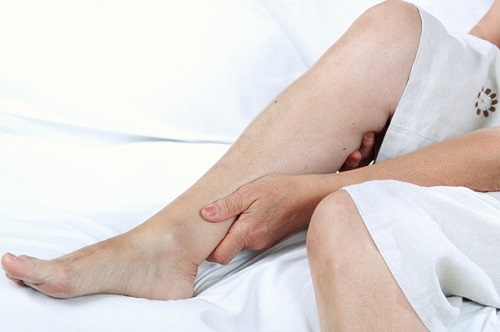
Drug treatment for RLS
Reception medicines indicated only for people who experience symptoms of restless legs syndrome at least three times a week. There are no drugs that completely cure the disease, but it is quite possible to alleviate the symptoms. If symptoms occur occasionally, then medications are not necessary. It is possible to use them only when unpleasant sensations are felt.
Used to treat the syndrome medications next classification:
- Dopaminergic agents. They increase dopamine levels in the brain and reduce symptoms.
- Dopamine agonists. They also increase dopamine levels, but side effects appear much less frequently. For example, treatment with mirapex brings positive results in the minimum dosage, which should only be determined by a doctor.
- Benzodiazepines. This is a group of sedative drugs. Help relieve sensations and regulate sleep.
- Opiates. Designed to relieve pain, but are addictive. Prescribed only in extreme cases when other means have not had the desired effect.
- Anticonvulsants. Prescribed for muscle spasms.
- Alpha-2 agonists. These are stimulants of alpha-2 receptors in the brain. drugs in this group help with primary syndrome restless legs
Many people do not consider restless legs syndrome to be a disease, attributing the discomfort to stress, fatigue and neurological problems. Nevertheless, this disease was studied in detail back in the middle of the twentieth century, and today medicine knows effective methods eliminating it. The pathology is quite difficult to diagnose, and the low qualifications of doctors play a significant role in this. In order to identify this problem in time, it is advisable for people at risk to have information about the causes and methods of treating the disease themselves.
What is restless legs syndrome (Ekbom or Willis disease)
Patients suffering from restless legs syndrome experience very strange sensations. It seems to them that something is itching inside their lower extremities, and they cannot scratch this place. Some patients experience pain, numbness, burning, cramps and pins and needles.
Up to 10% of the world's population knows firsthand about restless legs syndrome, and there are 1.5 times more women among those affected than men.
To get rid of itching, patients are forced to move their legs frequently, as a result of which the unpleasant sensations are dulled, but never completely disappear.
Restless legs syndrome can occur at any age
If you can tolerate this condition during the day, then at night the torment intensifies, because in the dark the symptoms become more intense. The peak of discomfort most often occurs between 0:00 and 5:00 am. The inability to fall asleep due to constantly “dancing” legs leads to chronic lack of sleep and insomnia, which negatively affects general health and mood.
Restless legs syndrome accounts for more than 15% of all reported cases of chronic insomnia.
Who is at risk: older people, children, pregnant women
As a rule, the disease affects older people, although there are often cases when this diagnosis is made to children, including infants and adolescents. The reasons for the occurrence of disorders in young patients are not fully understood: some doctors associate them with the period of growth, others with psychological disorders, the third - with the hyperactivity inherent in children. As you get older, restless legs syndrome only worsens, causing a person more and more discomfort and inconvenience.
Restless legs syndrome was discovered by Thomas Willis in 1672. The problem was studied more thoroughly by the Swedish doctor Karl Ekbom, who studied the disease in the 40s of the twentieth century. Out of respect for these scientists, restless legs syndrome is often called Willis or Ekbom's disease.
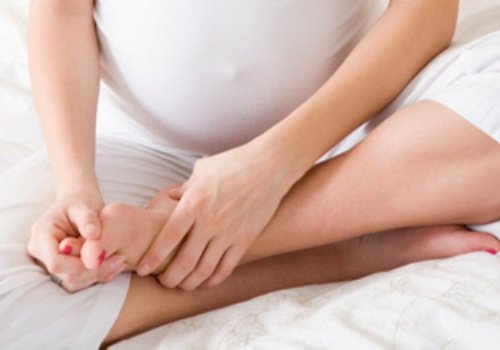 Pregnant women often suffer from restless legs syndrome
Pregnant women often suffer from restless legs syndrome
Most often the disease occurs in women. Patients over 60 years of age, as well as pregnant women of any age, are at risk.
The period of gestation of a child often becomes a factor provoking this unpleasant disease: 15 to 30% of expectant mothers suffer from it. Symptoms usually appear late in pregnancy and disappear spontaneously soon after the baby is born. If your legs continue to itch after childbirth, it means that the disease is not caused by a restructuring of the body, but by serious malfunctions in its functioning, in which case you should immediately consult a doctor.
Discussion of restless legs syndrome in the program “Live Healthy” - video
Causes and classification of the disease
Various forms of the disease are caused for various reasons. Restless legs syndrome can be idiopathic (primary) or symptomatic (secondary). Correct diagnosis of the type of disease is extremely important, since treatment will be different in each case.
Idiopathic form (primary)
The disease manifests itself independently and without cause, with good general health and the absence of other complaints.
Idiopathic restless legs syndrome is diagnosed in 50% of cases and occurs mainly in children and young people under 30 years of age.
Restless legs syndrome can be inherited, but doctors do not attribute its occurrence only to genetic causes - the disease is provoked external factors in people with a hereditary predisposition.
The main causes of the idiopathic form of the disease are:
- genetic factors;
- diseases of the nervous system;
- stress;
- constant fatigue;
- psychological factors.
With primary restless legs syndrome, it is quite difficult to overcome the pathology. It often bothers patients throughout their lives, with exacerbations followed by periods of remission.
Restless legs syndrome is often associated with psychological reasons: stress, anxiety, sexual tension and other internal problems.
Symptomatic or secondary
The secondary form of the disease occurs due to neurological and other problems, the elimination of which also eliminates unpleasant symptoms in the limbs. Highlight following reasons occurrence of this variety:
- iron deficiency anemia (most often causes Willis disease during pregnancy);
- diabetes;
- chronic renal failure;
- deficiency of vitamins and microelements;
- thyroid diseases;
- multiple sclerosis;
- heart failure;
- pulmonary obstruction;
- complications after;
- spinal cord injuries and tumors;
- cryoglobulinemia;
- amyloidosis;
- Sjögren's syndrome;
- Parkinson's disease;
- porphyria;
- uremia;
- insufficient blood supply to the legs;
- discogenic radiculopathy;
- alcoholism;
- hormonal problems.
In addition, symptoms of Willis disease can be triggered by the use of a number of medications:
- antihistamines;
- antidepressants;
- neuroleptics;
- anticonvulsants and antiemetics;
- calcium channel blockers.
Excess caffeine in the body can also cause this disease.
Symptomatic restless legs syndrome occurs at an older age than the idiopathic form. It mainly affects people over 45 years of age, and the lack of treatment only worsens the situation. The disease occurs without periods of remission, tormenting the patient almost constantly.
Symptoms of the disease
During a neurological examination, restless legs syndrome can be suspected only based on the patient's complaints. This disease does not cause functional changes, sensitivity and reflexes are preserved, and the specialist is not able to diagnose any disorders.
Specific symptoms become noticeable only in cases where Ekbom's disease occurs due to neurological problems: multiple sclerosis, spinal cord tumors, etc. In other cases, the pathology manifests itself exclusively as itching and pain in the lower extremities.
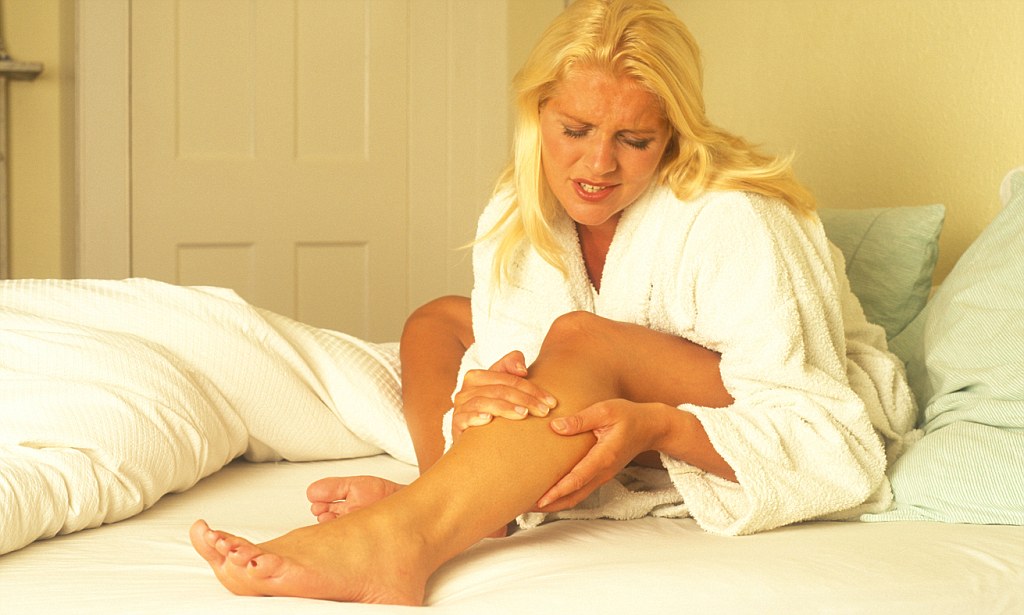 Patients are most concerned about discomfort in the lower leg area
Patients are most concerned about discomfort in the lower leg area
The following signs may indicate restless legs syndrome.
- A variety of unpleasant sensations in the lower extremities: pain, tingling, itching, goosebumps, burning, twitching, twisting, etc. It is often difficult for patients to even express in words what they feel. IN pathological process Usually both legs are involved, but the disease may begin with itching in only one limb.
The most intense sensations are localized in the legs, although the thighs, knees and feet may also itch. Sometimes the pain spreads to the torso and even arms.
- Increased discomfort when the limbs remain motionless.
- Insomnia. The intensity of sensations increases at night. Because of this, a person cannot sleep, because to relieve symptoms he must constantly move.
- Absent-mindedness and inability to concentrate. Lack of sleep has a bad effect on a person’s well-being (he becomes irritated), performance and concentration drop sharply, and the ability to learn decreases.
- Involuntary movements during sleep. During sleep, patients often involuntarily move parts of their body: their knees bend, their toes diverge, their hips and sometimes their arms twitch convulsively. This leads to the person constantly waking up.
- Depression and nervous disorders. Lack of normal sleep and decreased performance lead to bad mood, despair and depression.
The last symptom is quite serious, so restless legs syndrome is considered by no means a harmless disease. The earlier this pathology is recognized, the more time the patient will have to consult with doctors and develop effective technique treatment.
Diagnosis of the disease
Despite the fact that the pathology is quite common, not every doctor can diagnose it. The correct diagnosis is made only in 8–10% of patients; the rest are treated for various neurological disorders. Therefore, if you have developed insomnia, and discomfort in your legs bothers you not only at night, but also during the day, then it is better to immediately contact a specialist - a somnologist. A doctor who treats sleep disorders is well aware of restless legs syndrome, which is often the cause of chronic insomnia.
 People who have discovered signs of restless legs syndrome should contact a somnologist
People who have discovered signs of restless legs syndrome should contact a somnologist
Before examining and prescribing additional examinations, the specialist conducts a conversation with the patient, listening to complaints and collecting family history. If close relatives of a person also suffer from insomnia, most likely we are talking about an idiopathic form provoked by hereditary factors.
When an older patient without a family history visits a doctor, the person is referred for the following tests before making a diagnosis:
- general blood analysis;
- blood sugar levels;
- vitamin B12 level;
- content folic acid;
- ferritin test;
- analysis for urea, protein and creatinine;
- analysis of thyroid hormones (T4, TSH, AT-TPO);
- urine test (albumin, Rehberg test).
Women must undergo a pregnancy test to rule out causes such as hormonal changes. Other tests allow you to determine the lack of vitamins and minerals, characterize the condition of the heart, kidneys and lungs, diagnose diabetes mellitus, iron deficiency anemia, disorders of the thyroid gland, spinal cord tumors, etc.
After assessing the test results, the specialist may prescribe the following examinations:
- electroencephalogram - determines neurological disorders, in particular convulsive syndrome, which can be confused with Ekbom's disease;
- electroneuromyography - allows you to evaluate the conductivity of nerves;
- polysomnography - helps to make the correct diagnosis in case of an atypical course of the disease, detects leg movements during sleep.
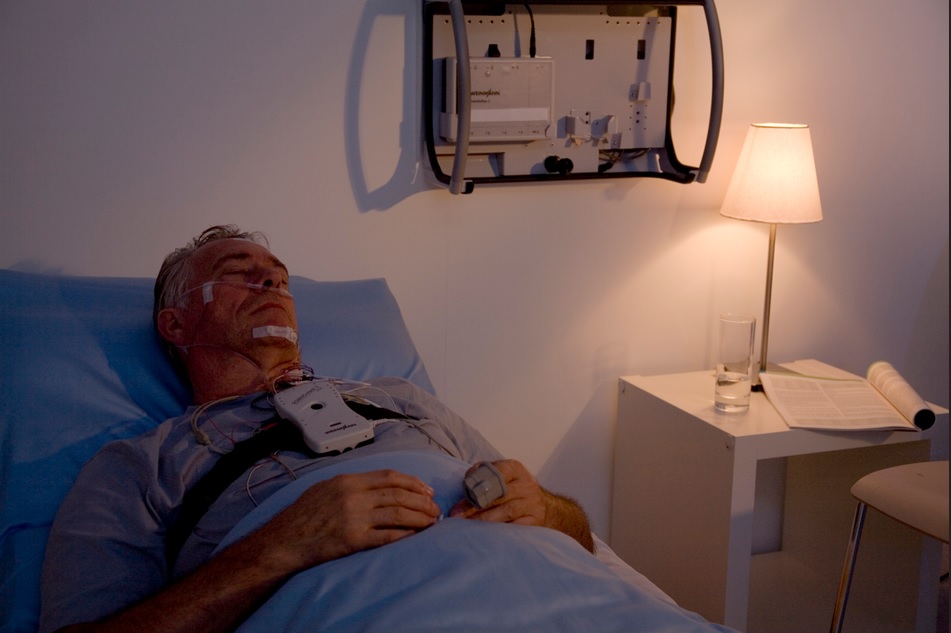 Polysomnography allows you to distinguish Willis disease from other diseases
Polysomnography allows you to distinguish Willis disease from other diseases
Using polysomnography, the doctor can determine the severity of the disease. If the equipment records up to 20 movements per hour, we are talking about mild form, while more than 60 twitches during the same time indicate an advanced case.
Sometimes, to confirm the diagnosis, the specialist prescribes dopaminergic drugs to the patient. If after taking them the symptoms disappear, it means that the person suffers from restless legs syndrome.
This diagnostic method is based on the discovery of a direct connection between Ekbom’s disease and the amount of the neurotransmitter dopamine in the body, which is involved in the transmission of nerve impulses.
Treatment of the disease at home and in the hospital
There is currently no separate drug for the treatment of Ekbom's disease. Removal efficiency unpleasant symptoms depends on the type of disease.
- The primary form is not completely cured, and the doctor’s task is to select drugs that can minimize discomfort.
- With secondary restless legs syndrome, you must first identify the disease that provoked it and concentrate all your efforts on its treatment. Once the cause is eliminated, the discomfort in the legs disappears.
Usually, drug therapy in combination with general strengthening measures brings positive effect, as a result of which patients feel noticeable relief.
With a mild course of the disease, when itching in the legs practically does not interfere normal sleep, you can get rid of unpleasant sensations using the following measures.
- Maintaining a sleep schedule. If discomfort prevents you from resting at the beginning of the night, try to change your daily schedule so that you can sleep as much as possible in the morning. Comfortable sleep A comfortable mattress and the absence of extraneous sounds will also contribute. And in order to relax faster, you can develop a certain ritual: for example, reading a book, listening to calm music or taking a bath before bed helps many people.
- Physical exercise. Moderate physical activity has a positive effect on the condition of the legs. Throughout the day and before bedtime, it is useful to do exercise therapy, perform hiking, do Pilates, swimming, yoga or stretching. But it's too much active species sports can provoke an increase in symptoms, so running, jumping, football and volleyball are contraindicated for people suffering from Willis disease.
- Avoiding caffeine. It is worth excluding from your diet not only coffee and black tea, but also chocolate, Coca-Cola, and energy drinks. Also, avoid alcohol, as alcohol can worsen the symptoms of restless leg syndrome.
- Systematic foot massage. Rubbing the lower extremities before bed can reduce discomfort and make it easier to fall asleep.
- Hot and cold foot baths or compresses. Leg stimulation low or high temperature will help you fall asleep faster.
- Increased intellectual load. Loading your brain with a solution logical problems, you can minimize unwanted symptoms.
- Refusal of medications causing disease Ekboma.
If such measures do not have the desired effect, treatment with medication should be started.
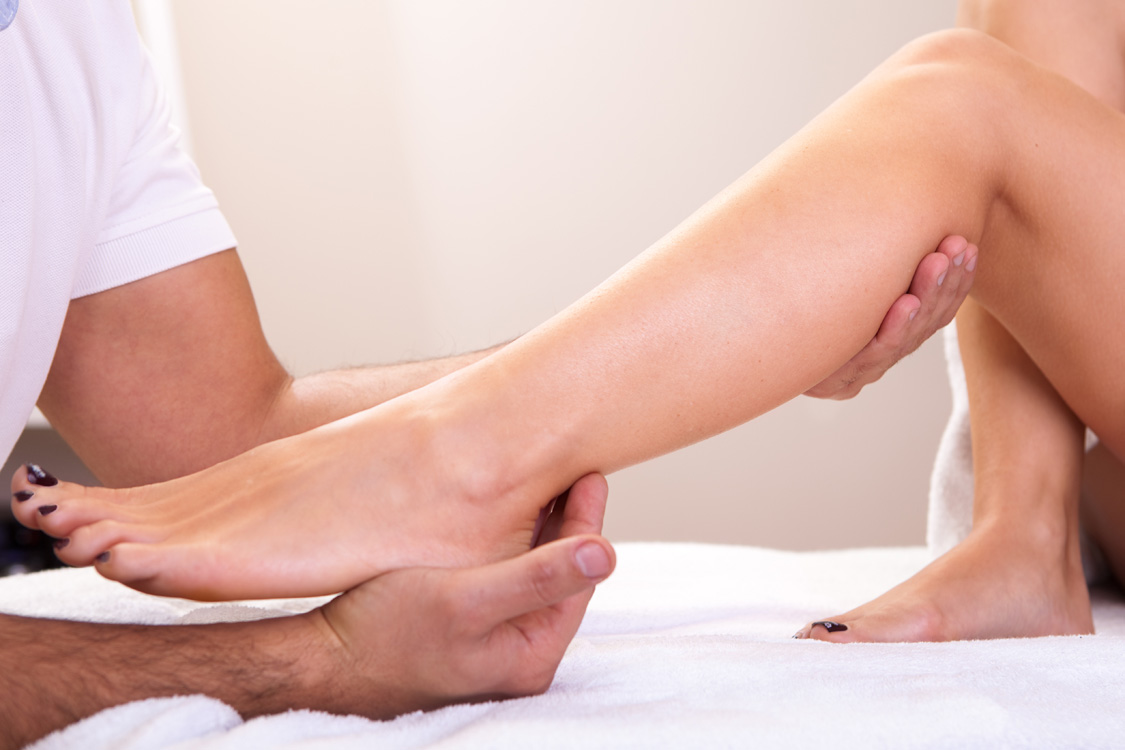 Foot massage helps relieve unpleasant symptoms
Foot massage helps relieve unpleasant symptoms
Drug treatment
For the treatment of restless legs syndrome of middle and severe degrees Doctors recommend that patients take the following medications.
- Antiparkinsonian drugs: Mirapex. Most often, patients are prescribed this drug. It stimulates the synthesis of dopamine, the lack of which causes discomfort in the legs.
- Benzodiazepines: Afobazole, Alprazolam, Clonazepam. These drugs have a hypnotic effect on the body, but can cause dependence if used for a long time.
- Dopaminergic drugs (levodopa): Madopar, Sinemet, Nacom. Such drugs quite effectively relieve unpleasant symptoms, but do not always normalize sleep, so in parallel with them, sedative medications are often prescribed.
- Dopamine receptor agonists: Bromocriptine, Pronoran, Pramipexole. Being a type of dopamine drugs, these drugs can eliminate the manifestations of restless leg syndrome without causing addiction.
- Sleeping pills and tranquilizers: Ambien, Klonopin, Restoril. Taking these medications helps normalize sleep, but doctors usually do not recommend using them for a long time.
- Anticonvulsants: Tegretol, Neurontin, Gabapentin. If the patient suffers from leg cramps, he is additionally prescribed anticonvulsants.
- Painkillers: Menovazin, Nise, Nicoflex. To relieve pain, your doctor may prescribe local application ointments with analgesic and relaxing effects.
- Opiates: Codeine, Oxycodone, Methadone, Tramadol. At severe course Willis disease can be treated with opiate injections. Doctors try to resort to them in the most extreme cases, so as not to cause drug addiction in the patient.
- Drugs for depression: Trazodone, Befol, Moclobemide. The selection of these drugs must be very careful, since some antidepressants can worsen the condition of people suffering from Ekbom's disease.
- Vitamin and mineral complexes: Magnerot, Vitrum, Magne-B6. If the test results reveal a significant lack of vitamins and minerals in the patient, the specialist prescribes appropriate pharmaceuticals: preparations of magnesium, iron, folic acid, lecithin, etc.
Willis disease is insidious in that patients often require long-term use medications, so the doctor tries to select minimum dosages medications to relieve symptoms and provide a gentle toxic effect on the body.
It is especially difficult to treat pregnant women. In such cases, the specialist tries to identify and eliminate the cause of the disease. In most cases, the culprit is a lack of microelements, especially iron. This condition normalizes after the course iron-containing preparations. If the body contains more than serious violations, doctors advise eliminating the symptoms of restless legs syndrome in pregnant women non-drug methods, and small doses of medications (usually Clonazepam or Levodopa) are prescribed for short periods of time and only in extreme cases.
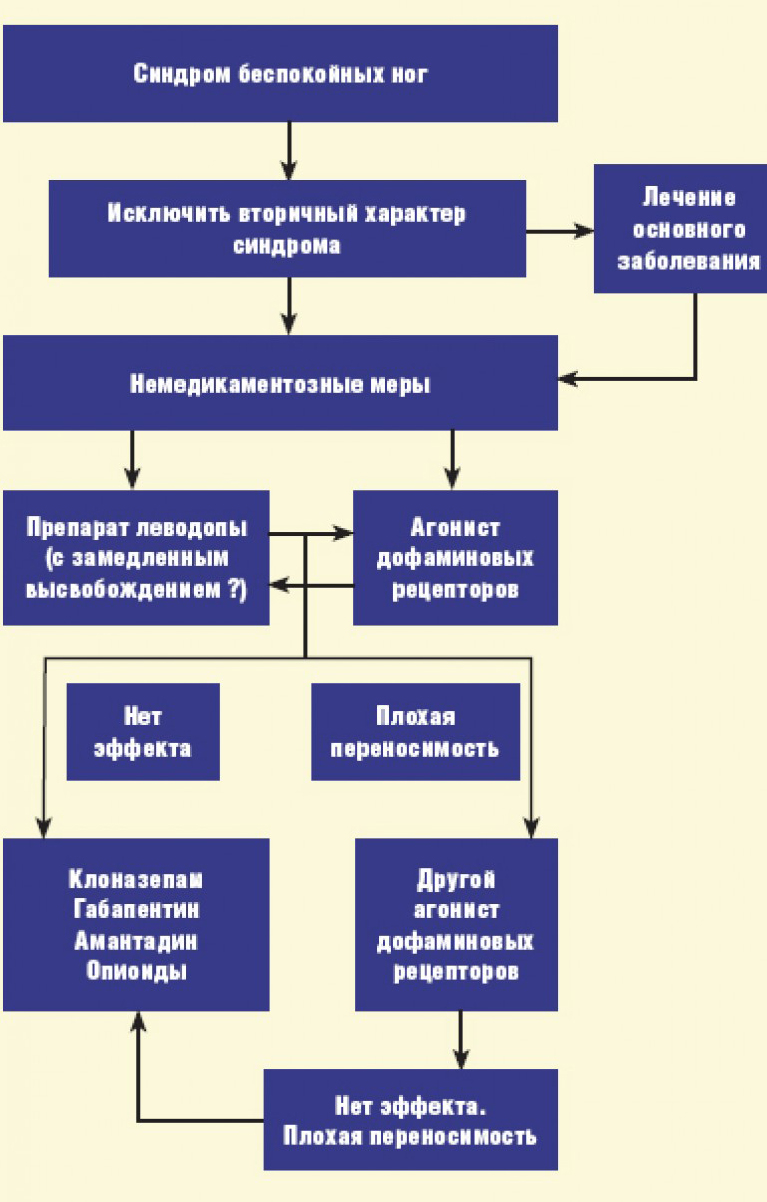 Treatment of restless legs syndrome is carried out according to a specific algorithm
Treatment of restless legs syndrome is carried out according to a specific algorithm
Mirapex, Afobazol, Magnerot, Lecithin and other tablets and medications prescribed for pathology - gallery




Physiotherapy and exercise therapy
Physiotherapeutic methods can be used as additional measures or as the main therapy for mild cases of the disease, as well as if taking medications is undesirable for the patient: when treating children, pregnant women, and people with severe damage to the kidneys and liver.
The following treatments may provide relief for restless legs syndrome:
- magnetic therapy;
- lymphopress;
- mud therapy;
- vibration massage;
- acupressure;
- electrical stimulation;
- acupuncture;
- darsonvalization;
- cryotherapy.
 Lymphopress, or pressotherapy, relieves itching and pain in the legs
Lymphopress, or pressotherapy, relieves itching and pain in the legs
In parallel with physiotherapy, the patient is often prescribed physiotherapy. Exercise therapy complex may include the following exercises:
- fast walk;
- jogging;
- squats;
- stretching the calf muscles;
- leg curls;
- walking on tiptoes;
- cycling or exercising on an exercise bike.
Sometimes, in addition to physiotherapy and exercise therapy, you may need to consult a psychologist or psychotherapist. As a rule, such a measure is required if the doctor suspects that the disease is caused by psychological reasons.
Folk remedies
Some people are cured of restless legs syndrome using traditional methods. In the initial stages of the disease, they can really help, but in advanced cases you cannot do without medications.
Most often, the following recipes are used to get rid of Ekbom’s disease:
- Bay oil. Add to 100 ml olive oil 30 g bay leaf and let the liquid brew in a dark place for about 2 weeks. With the resulting tincture, you should massage your feet every evening before bed.
- Golden mustache tincture. Rub the lower limbs with pharmaceutical tincture before going to bed.
- Horseradish tincture. Pour crushed roots and leaves of horseradish with alcohol or vodka and leave for 4-5 days in a dark place. Rub your feet regularly with this product.
- Tincture of nettle, valerian, oregano and sage. 3 tbsp. l. Pour 1 liter of boiling water over each herb, let the liquid brew and use it for foot baths.
- Lime tea. Have a restful sleep promotes Herb tea from linden with the addition of lemon balm. These herbs should be brewed like regular tea and consumed 1–2 hours before bedtime.
- Hawthorn infusion. Brew 1 tbsp. l. hawthorn berries with a glass of boiling water and drink the drink shortly before bed. This will calm you down nervous system and will help relieve discomfort in the legs.
TO traditional methods This also includes foot massage using home appliances: a Kuznetsov applicator, wooden and plastic massagers with spikes, and even an ordinary rolling pin, which is recommended to be rolled with your feet on the floor.
Traditional methods do not always help and not everyone. To as soon as possible To get rid of unpleasant symptoms and not torment yourself with insomnia, it is better not to self-medicate, but to choose adequate methods to eliminate the problem together with a doctor.
Folk remedies effective for restless legs syndrome - gallery
Tincture of nettle, valerian, oregano and sage Linden and lemon balm tea
Linden and lemon balm tea  Hawthorn infusion
Hawthorn infusion 

